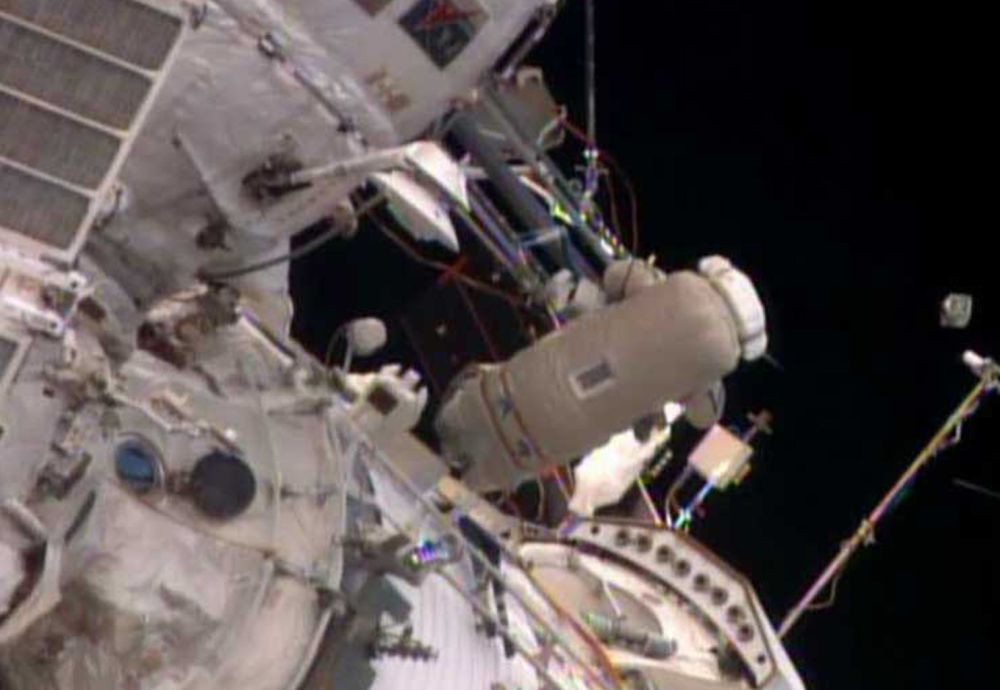CAPE CANAVERAL, Fla. — Spacewalking astronauts launched a tiny Peruvian research satellite Monday, setting it loose on a mission to observe Earth.
Russian Oleg Artemiev cast the 4-inch box off with his gloved right hand as the International Space Station sailed 260 miles above the planet. The nanosatellite gently tumbled as it cleared the vicinity of the orbiting complex, precisely as planned.
“One, two, three,” someone called out in Russian as Artemiev let go of the satellite.
Cameras watched as the nanosatellite – named Chasqui after the Inca messengers who were fleet of foot – increased its distance and grew smaller. Artemiev’s Russian spacewalking partner, Alexander Skvortsov, tried to keep his helmet camera aimed at the satellite as it floated away.
The satellite – barely 2 pounds – holds instruments to measure temperature and pressure, and cameras that will photograph Earth. It’s a technological learning experience for the National University of Engineering in Lima. A Russian cargo ship delivered the device earlier this year.
Less than a half-hour into the spacewalk, the satellite was on its way, flying freely.
With that completed, Artemiev and Skvortsov set about installing fresh science experiments outside the Russian portion of the space station and retrieving old ones.
Copy the Story LinkSend questions/comments to the editors.



Success. Please wait for the page to reload. If the page does not reload within 5 seconds, please refresh the page.
Enter your email and password to access comments.
Hi, to comment on stories you must . This profile is in addition to your subscription and website login.
Already have a commenting profile? .
Invalid username/password.
Please check your email to confirm and complete your registration.
Only subscribers are eligible to post comments. Please subscribe or login first for digital access. Here’s why.
Use the form below to reset your password. When you've submitted your account email, we will send an email with a reset code.